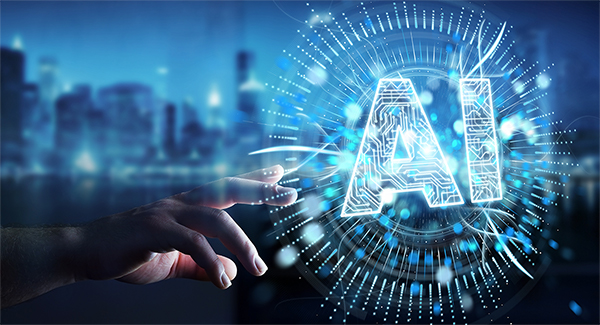..From KI as a tool to KI as an inventor
The German software pioneer SAP defines artificial intelligence as a generic term for applications in which machines perform human-like intelligence services. This includes machine learning, natural language processing (NLP) and deep learning. The basic idea is to use machines to approximate key functions of the human brain – learning, judgment and problem solving. The idea of AI goes back to an article by Alan Turing in 1950. In „Computing Machinery and Intelligence,“ Turing describes how intelligent machines can be built and their intelligence tested. Just 5 years later, the „Dartmouth Summer Research Project on Artificial Intelligence (DSPRAI)“ presented the first AI program, which formed the basis for research over the next decades.
However, it was not until the 1980s that John Hopefield and David Rumpelhart achieved the breakthrough in the field of AI research with their „deep learning“ techniques. This enabled computers for the first time to learn from experience and use expert systems to mimic human decision-making.
Nevertheless, it has taken another 40 years before patent applications have now been filed for the first time for inventions that do not name human individuals as inventors, but an artificial intelligence. Apart from ethical considerations, which will not be discussed here, the question now arises whether this type of naming is permissible at all.
Landmark decision from CFAC
Exactly this question had to be decided by the United States Court of Appeals for the Federal Circuit (CAFC) in – for the time being – the last instance (1). The lawsuit was filed by software developer Stephen Thaler, who, according to his own statements, had developed an AI system („Device for the Autonomous Bootstrapping of Unified Science, DABUS)“, which is supposed to be able to generate patentable inventions. In July 2019, he filed two inventions (2) with the USPTO, citing only the DABUS AI as the inventor.
After unsuccessful requests from the office to designate a human inventor, the applications were rejected. Thaler’s appeal to the District Court was unsuccessful, so that the CAFC subsequently had to deal with the matter. However, this court was also unable to identify any error in the preliminary decisions. The judges based their decision closely on the wording of the Patent Act, which refers exclusively to „individuals“ in connection with inventors. Although the Patent Act does not define the term „individual,“ the Supreme Court ruled that „… when used as a noun, individual ordinarily means a human being, a person.“ (3)
Moreover, the Patent Law only refers to „himself“ or „herself“ in connection with inventors, but never to „itself.“ Ultimately, the decision is also in line with earlier case law, according to which inventors must be natural persons and therefore companies cannot be inventors. Since the legislature has not given any indication of changing this practice in the future, the action had to be dismissed.
German courts follow a different approach, but come to the same results
The problem is not limited to the USA. Recently, the German Federal Patent Court had to decide a very similar case. The „Food Container“ case (4) dealt with the same question of whether an AI can be named as an inventor. Here, too, the 11th Senate agreed with the rejection by the examining division and confirmed that only natural persons can be inventors, but not machines. The German Patent Act (5) had the task of protecting the inventor personality. It follows from this that machines can never be named as inventors, regardless of how great the machine assistance may have been in the development of an invention. The case of a computer being used was not to be judged differently, since even such operating equipment cannot be creatively active itself.
Do the decisions fit into today’s time?
While the decision of the CAFC was very formal, but substantively comprehensible, the view of the BPatG is astonishingly old-fashioned and outdated by reality. It may be noted with suspicion, but AI is very much capable of its own creations and performs amazing feats in the fields of painting, literature and music, for example (6). The application of AI in science, especially in the field of life sciences, now goes far beyond pure „machine learning“ and is constantly opening new windows of opportunity, For example by improving patient and clinical trials‘ data collection for drug development and repurposing. Mobile technologies associated to AI have also been used to improve patient’s lives. Thus, the central argument used by the DPMA has long been reduced to absurdity. It is to be hoped that the case will find its way to the Federal Supreme Court.
To come back to Stephen Thaler: the South African patent office has recently accepted the naming of AI as inventor in his patents.
The times they are a changin (Bob Dylan).
1. CAFC Thaler v. Vidal, 2021-2347 (05.08.2022)
2. US 16/524,30 Neural Flame; US 16/523,532 Fractal Container
3. Mohamad v. Palestinian Auth. 566 US 449, 454 (2012)
4. BPatG GRUR 2022, 1213 – Food Container
5. § 37 I PatG

